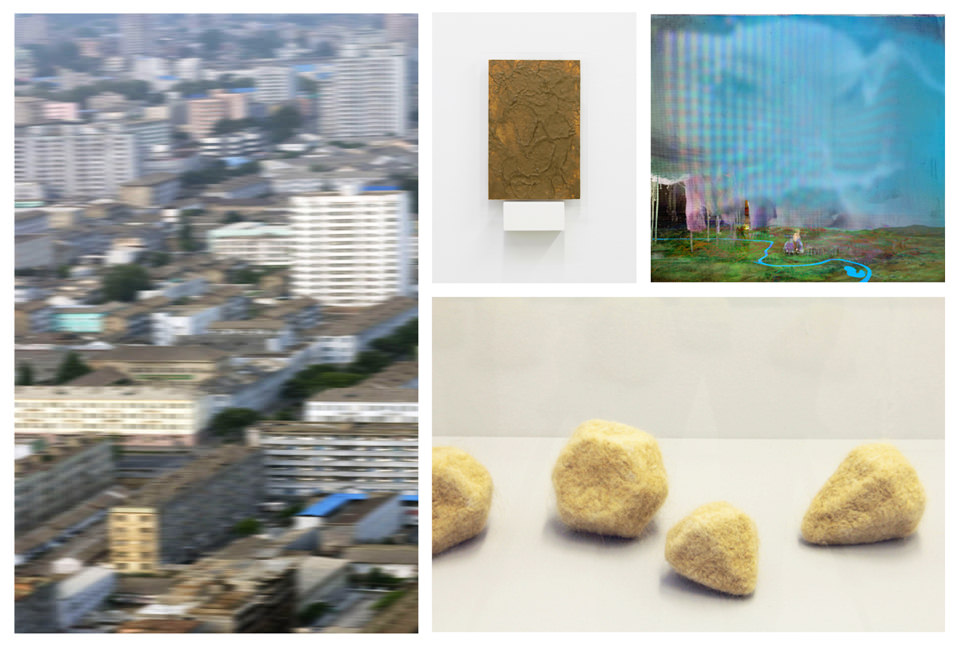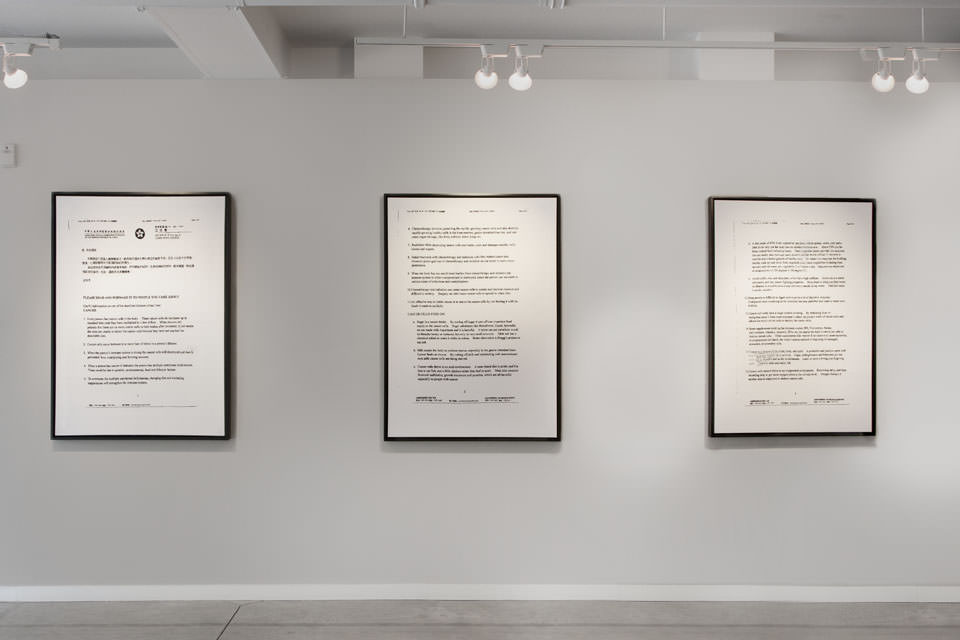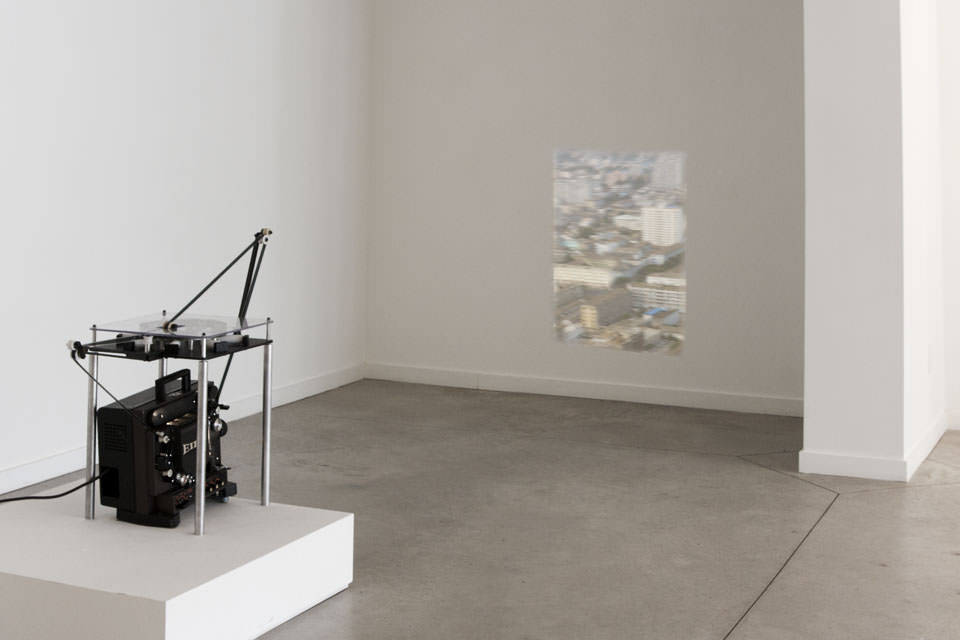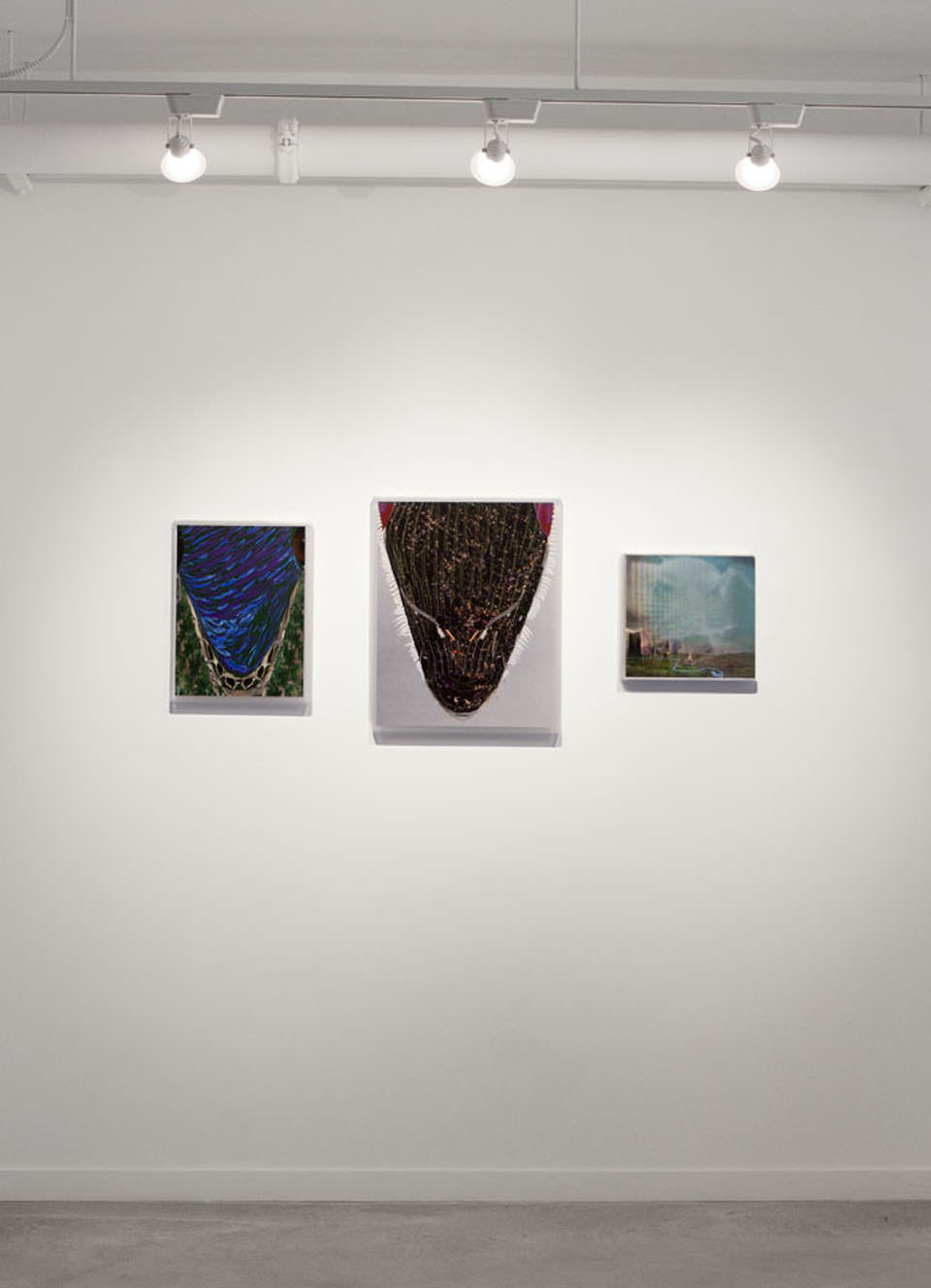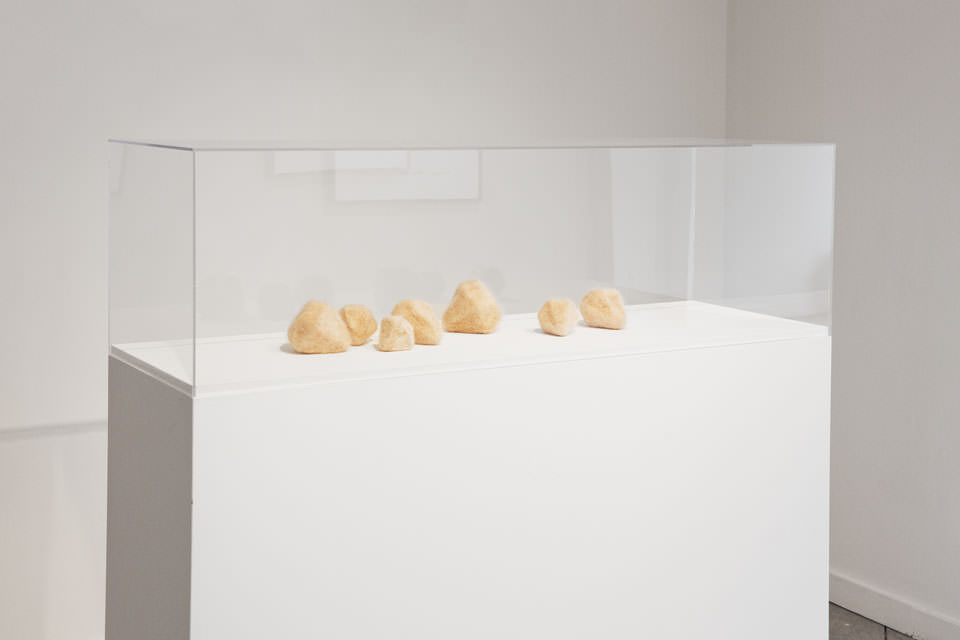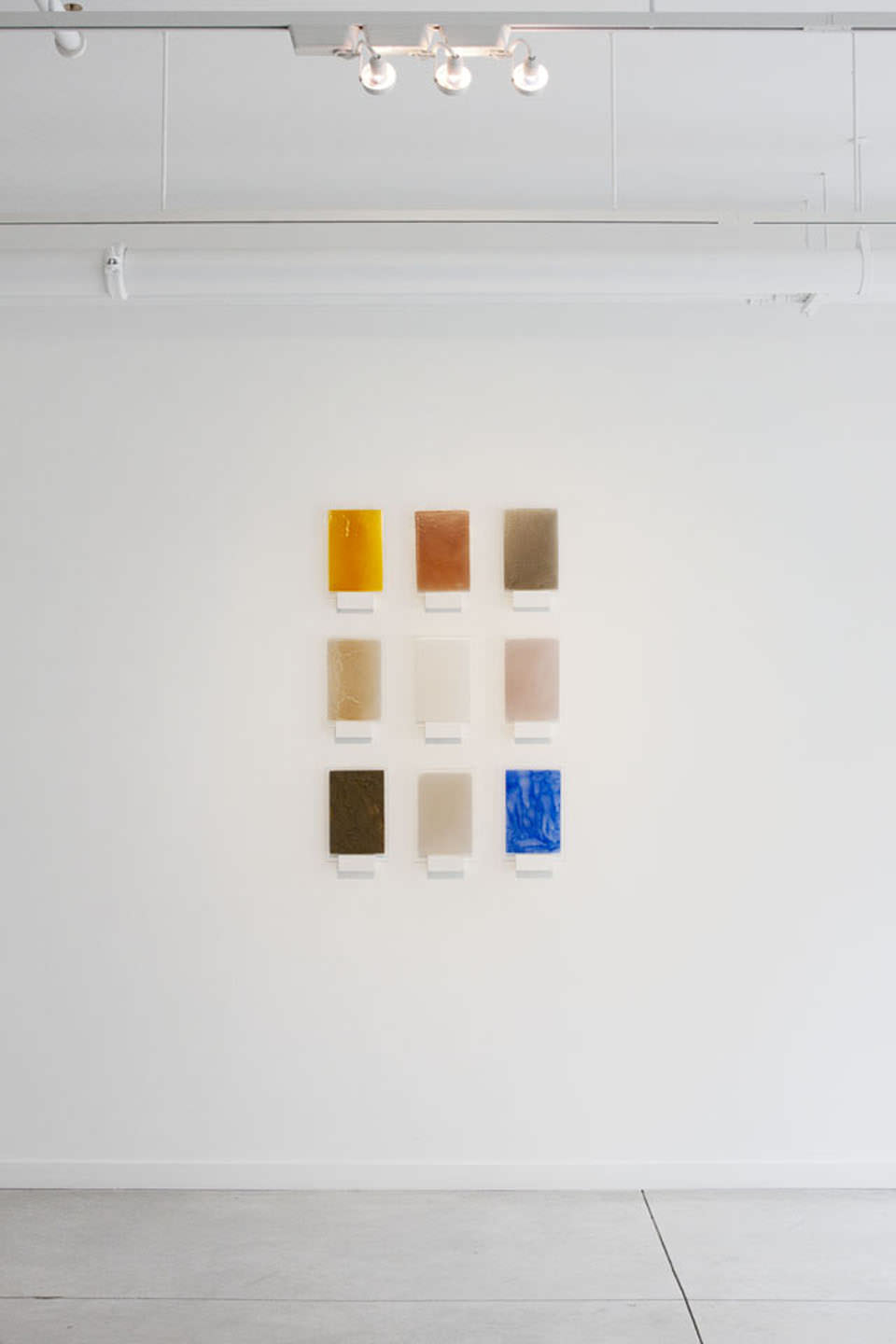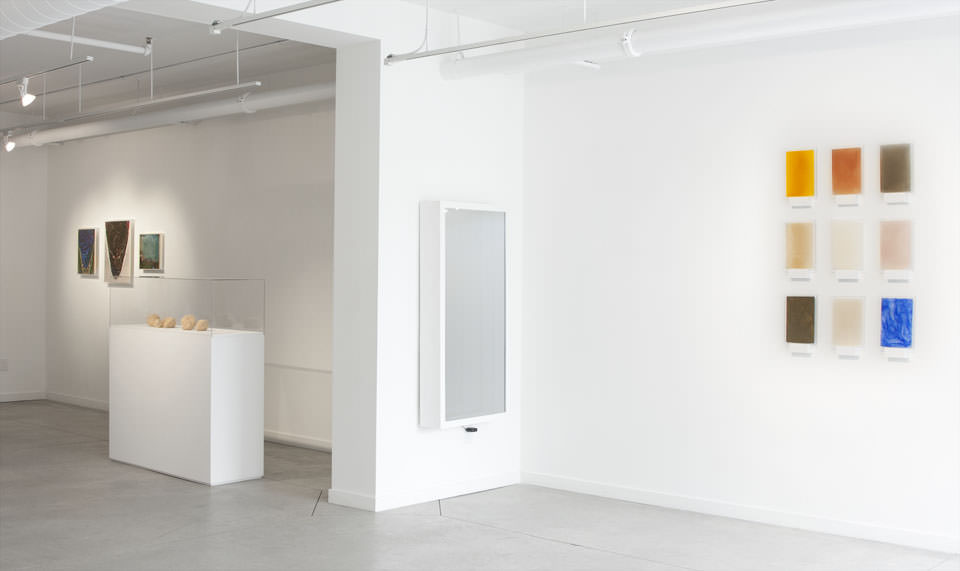Translation
Curated by O'Born Contemporary's new Associate Director,
Rachel Anne Farquharson.
March 1 – March 30, 2013
artists
Alex Fischer
John Monteith
Petrina Ng
Callum Schuster
statement
A translation can be many things: It can be a conversion or transformation from one physical form to another, it can be a progression in biological stage, and it can even be, in the most geometric of terms, the movement of a shape along an axis. Within art's pedagogical premise, the most apt definition for translation might be the rendering of something into one's own language, semiotically or aesthetically. Viewed through this lens, geographies that are foreign, ideologies that are suspect, and modes of technology to which we find ourselves unwittingly beholden need a level plane upon which to exist in globalized society. The arrow of understanding, as Translation permits, rarely points in one direction, however. The exhibition provides recourse to how translations can also abet the fetishization of objects, enabling simple acts to suddenly become estranged.
Each artist in Translation confronts the banal, at once making it pliable to our understanding and relocating it in the realm of the monumental through inherently indexical material. Alex Fischer reappropriates digital imagery culled from today's archival internet abyss, exacting the terror of the sublime through an exposition of our dissolved communion with nature. As the artist's high-resolution content surpasses any interface capable of displaying the work in its "natural state", it is revealed that human vision has entered into stalemate with contemporary pixel acuity and printing technology. John Monteith transforms composite digital photography into a continuous film loop, a transubstantiation that exposes the foreign social and ideological landscape of North Korea as viscerally tangible, yet absent, unreachable, and indeterminate. Gazing at the visually noisy, obscured surveillance of Pyongyang, North Korea, June 5 101, 6:57 pm, the viewer's built knowledge of the world is challenged, rendering typical modes of socio-cultural analysis inapplicable. Here, digital photography reprinted as film is as much a facsimile as Petrina Ng's tapestries, where government-issued documents form the cartoon for customary cross-stitched rhetorical phrases or "words of wisdom". Heirloom Facsimile, the artist's tri-part work, explores not only the physical journey artefacts take as they are passed between relatives but also the way in which language and concepts translate between Eastern and Western socio-cultures, at times precipitating an unintentional propagandistic tone. Complimenting this work is a set of seven diamond forms felted from the archived fur of Ng's deceased childhood pet dog. Referencing the contemporary funerary practice of memorial diamonds-a product of compressed cremated ashes-these imitative gems are created though an analogous mechanism of compression, a gesture that playfully reveals the absurdity of the memorial. Furthering this exploration into remembrance, Callum Schuster creates abstracted daily journal entries by engaging with "artefacts of the day"-rusted metal shorn from a soy silo or sea urchin spines collected during his travels. The artist grinds these mundane objects down to particulate matter and suspends them in acrylic or varnish, simultaneously redefining paint as a medium and alluding to human's inclination to entrap mosquitoes in amber. His preservation of each day becomes a ritualistic and alchemical act as solid matter is translated into a medium that bears enhanced meaning. Bringing his metaphysical exercise back into the realm of lived space, Schuster also offers an infinity mirror portal, the optics of which bend and transform our eye's path into a quaternary dimension.
In conversation, the artists in this exhibition aim to translate aspects of life, either by material or digital processes. Transformed in these ways, the landscapes of social, psychic, cultural, physical and political content breach the boundaries of ordinary experience, inciting their audience to new personal and collective understanding.
about the curator
Rachel Anne Farquharson is Associate Director of O'Born Contemporary, where she compliments and supports the Director's creative pursuits. While maintaining this role, Farquharson continues her practice as an essayist and curator. The Tate Britain has published her critical writings on the Gallery's new acquisitions and a monograph essay relating Brian Adam Douglas's cut paper images to choreographic revolutionary Pina Bausch was produced by DRAGO in 2011.
Farquharson is a regular feature contributor to C Magazine, having published an interpretive essay on Kerry Tribe in the fall of 2012. She also writes content for Carousel Magazine and the Huffington Post, critiquing both local and international exhibitions and artists. Over the past two years, she has published texts on O'Born Contemporary artists Alex Fischer and John Monteith in addition to moderating a round-table seminar with Kate McQuillen in conjunction with her 2011 solo exhibition, Conventional Weapons. Recently, as a part of "C Magazine|Conversations" at Art Toronto 2012, Farquharson conducted a public interview with artists Elle Flanders and Tamira Sawatzky (Public Studio) which focused on the social politics of architecture within visual art. Translation, a group exhibition opening at O'Born Contemporary in March 2013, will represent her first curated show at the gallery.
Farquharson read Modern and Contemporary Art History and Connoisseurship at Christie's Education, London, earning a First in her Master's Degree.
